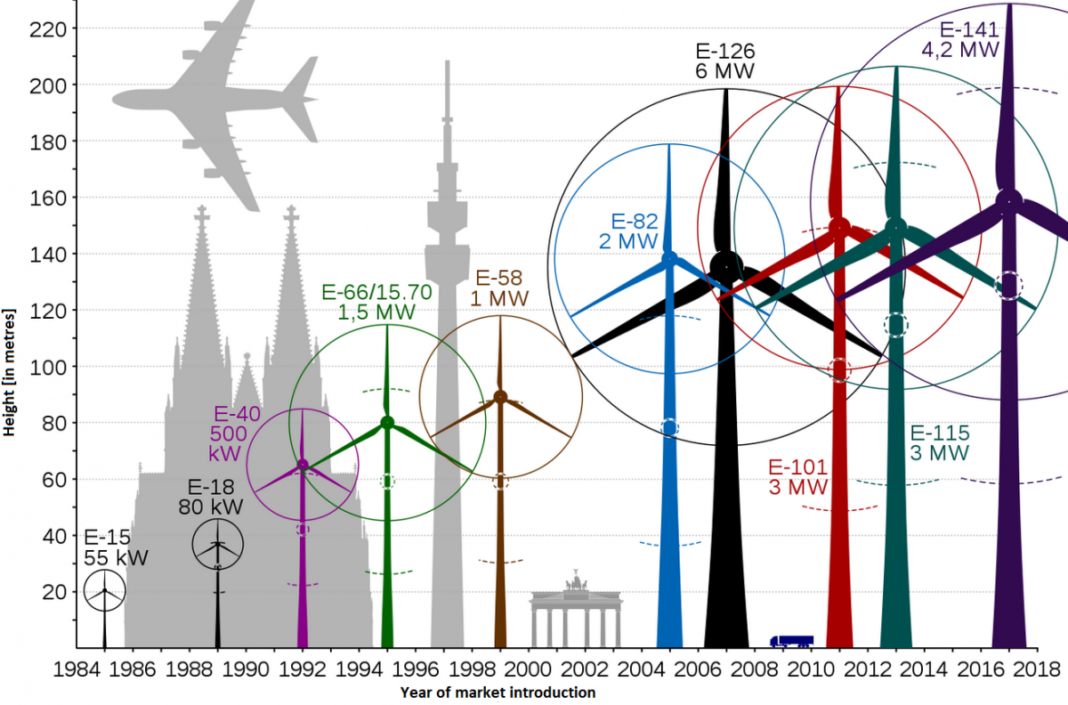Onshore wind power is a central pillar of Germany’s transition to low-carbon electricity generation and projected to become the country’s number one power source. This factsheet takes a look at German wind power industry’s most important actors, financial support for the technology, and its future in a world that increasingly embraces renewables but poses unprecedented challenges at home. [UPDATES 2019 expansion & output figures.]
Output
Germany has led the field in installing onshore wind power capacity in Europe for many years, is by far the biggest market in the region and a global technology leader. But the national industry has struggled over the past years, bringing domestic expansion down to the lowest level in 20 years in 2019. By the end of that year, about 29.450 onshore turbines with a total capacity of nearly 54 gigawatt (GW) were in operation across the country. With a gross expansion of about 5.3 GW, the year 2017 saw the strongest capacity growth ever . But expansion slowed down by more than half in 2018 to 2.4 GW and dropped to merely 1 GW in 2019.
The expansion collapse is due to several factors but regulatory problems w are widely seen as the main issue. An analysis by energy industry lobby group BDEW found that the falling number of permits issued for onshore wind turbines was the main factor behind the decline, with issued licenses dropping by 70 percent over three years. About 11 GW, roughly 2,000 turbines, were stuck in bureaucratic procedures as of mid-2019. Challenges arise from mandatory minimum distances from residential areas and aviation infrastructure, or as a result of lawsuits brought by citizen movements and environmental groups , even though recent surveys suggest Germans remain overwhelmingly in favour of further epxansion. Economy minister Peter Altmaier promised to […]
Click here to view original web page at www.cleanenergywire.org

